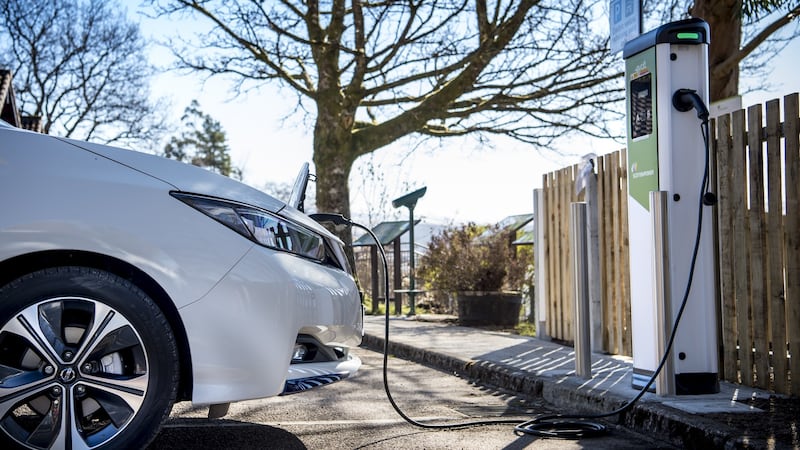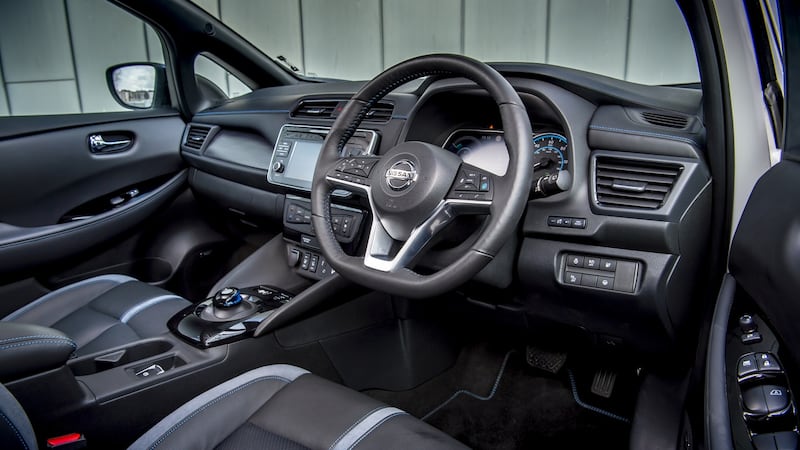History is replete with turning points. A grand philosophical point, albeit one which comes from a somewhat ephemeral source. Not one of the great academic nor political minds of the age, but a line spoken by an actor in a film. By Leonard Nimoy, in fact, in his iconic role as Mr Spock in Star Trek. Ephemeral, perhaps, but as so often with both Nimoy and Spock, really rather wise.
We are looking for a historical turning point right now, or as Nissan Ireland's chief executive, James McCarthy, puts it: an inflection point. That indefinable hinge of history, when one circumstance begets another and the course of our lives is changed. The trouble is, how does one know when one is standing at the turning point? How does one see history when one is living inside of it?
One always assumes that the great women and men of history – Pearse, Markievicz, Churchill, Eisenhower, Parks, Bell Burnell – knew how significant their greatest days were. But then again, they got up those mornings and went to bed those nights, just as with any other day, so who can really tell? You only know the major moments of history once they’ve passed.
So, is the launch of the new Nissan Leaf in Ireland one of those points? It could well be. We are already barrelling towards that notional 2030 cut-off date after which no internal combustion engines can be sold in Ireland, and the agreed wisdom is that motoring must go electric if it is to survive. The original Leaf was designed to awaken people to the very notion of driving about on silent battery power, but this second generation has a much tougher task – to convince the sceptics.
Defeat the scepticism
The compelling argument, the one to defeat the scepticism, says Nissan Ireland's head of product, Peter Dynan, is an economic one. "People aren't minded to move out of their internal combustion engines right now, because they're affordable. They're a known quantity, they know what their residuals are likely to be like. Equally, people didn't all rush towards buying diesel because we all suddenly fell in love with diesel as a fuel. It was because people love the most economical and affordable mode of transport out there."
Nissan’s task, then, is to convince buyers not only that the new Leaf has the sort of one-charge range to make it a viable and useable car for everyday use, but also to get across what it thinks are the savings buyers and drivers can make.

If Nissan’s figures are correct, then those savings could be substantial. The introduction of policies that allow companies to write off 100 per cent of the value of an electric car in the first year of ownership could yield tax savings of between €3,000 and €10,000 compared to a similarly-sized hatchback or crossover. Someone getting a new Leaf as a company car, thanks to the new benefit in kind rules, could be better off to the tune of €4,368. Meanwhile, a private buyer, just taking into account the cost of fuel and motor tax, could be as much as €1,400 better off in year one of Leaf ownership.
Of course, these are Nissan’s numbers, and there’s a pinch of salt for everyone in the audience. There are also some very Rumsfeld-esque known unknowns and unknown unknowns in all of this. Such as how big a brake on sales (and day-to-day usability) the public charging network will be when more and more people are trying to use it (Nissan Ireland candidly admits that the state of the network, and the lack of clarity on its future ownership and investment, is currently a significant drag on electric car sales).

Then there's the question of what the Government does when someone at the Department of Finance wakes up and realises that electric cars, assuming we get the now-expected 500,000 electric cars on the road by 2030, are eating deeply into the €1 billion or so that the exchequer currently gets from VRT, motor tax and fuel duty. Perhaps ugh-knowns might be a better phrase.
Still, one has to start somewhere and the new Leaf is, in and of itself, a really impressive car. It’s far more normal in its styling than the outgoing model, which is probably a good thing when it has to convince conservative Irish buyers that it’s going to be their next car, but it’s hardly the most exciting car to look at. Ditto the interior, which is fine but a touch ordinary. It is well built and pretty comfy, though, although the driving position would be better if the steering wheel were reach-adjustable.
Ride quality on the firm side
What’s really good about the new Leaf, though, is the way it drives. It’s just so smooth and quiet, you’d call it oleaginous if there were actually any oil involved. The ride quality is on the firm side, but only very rarely intrusive, and the lack of wind, road, tyre, and (of course) engine noise is hugely impressive. It’s a very relaxing car to drive, thanks to all this quietness, but also rather a lot more invigorating thanks to sharper steering and the proper kick from the 150bhp electric motor. You can even, hooligan-style, spin up the front wheels under sharp acceleration. Of rather more import to more buyers, the e-pedal, which brakes the car firmly with both regenerative charging and the physical disc brakes when you lift off the accelerator, makes it something of a doddle to drive.
And range? Well, we grabbed the keys to our test car with 74 per cent charge in the batteries, and took it for a very brisk drive around the Wicklow mountains, on roads arguably not best suited to an electric car, driving in a style specifically intended to put the battery under stress and wipe out range. After which, we dropped it back with 40 per cent battery remaining. The distance-to-recharge readout seems to be a touch indecisive at times, but overall we reckon that in mixed driving, 200-250km should be easily achieved, even with some motorway miles involved. That's right in line with Nissan's claim (under the new WLTP economy and emissions checks) of 270km.
Arriving in dealers now
It’s already proving successful. Irish orders currently stand at some 200, with the first cars only arriving in dealers now. The old Leaf’s best year for sales was 400, and Nissan Ireland expects to pass that figure by the end of April. In a full sales year (the Leaf arrives here now, just as the biggest chunk of new car sales has already passed) it could potentially do better than 2,000 sales a year. Its residual values are looking up too.
Second-hand values of the old model have been up and down more times than West Bromwich Albion, but are rising fast now, especially thanks to the fact that UK values are going up as buyers seek a cheap-to-run second car, and move away from diesel and, indeed, petrol. Those hardening UK values are having an effect on the supply of used imported Leafs, which is having a knock-on with Irish values.
Is it enough to make the new Leaf a true historical hinge-point? Have we crossed an electric car rubicon? Sadly, my only answer is that those living through history can rarely accurately assess its significance. This could well be the turning point, but if we want to get to that electric future, perhaps it’s best to quote that other great cinematic philosopher, Dory the Fish – “Just keep swimming, just keep swimming . . .”
Lowdown: Nissan Leaf
Price: From €26,290 up to €32,600 (includes €5,000 Government grant but excl. delivery and other charges)
Power: 150hp.
Torque: 320Nm.
0-100km/h: 7.9sec.
Top speed: 144km/h.
Claimed range: 270km (on new WLTP test).
CO2 emissions: 0g/km.
Motor tax: €120.
Verdict: Thoroughly impressive. Good enough to be a turning point? Maybe…
Our rating: 4/5









